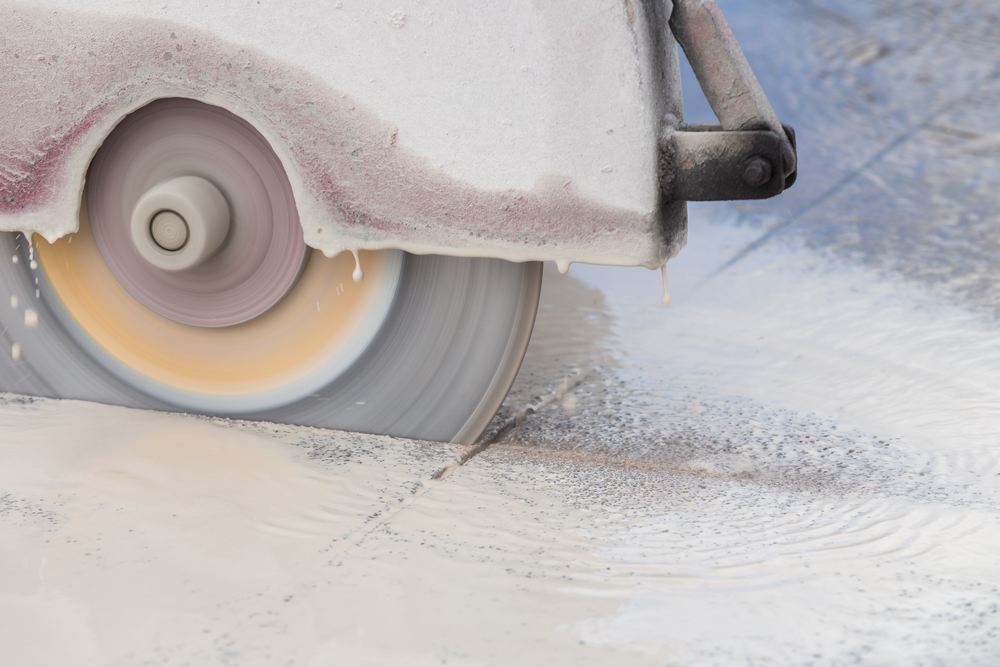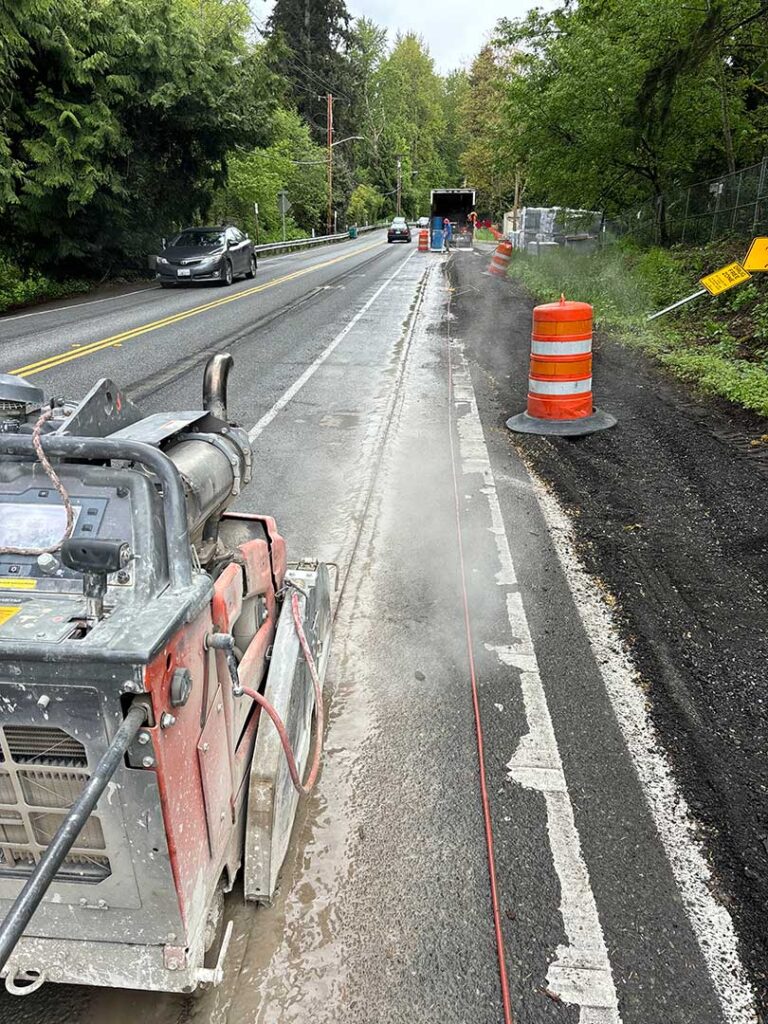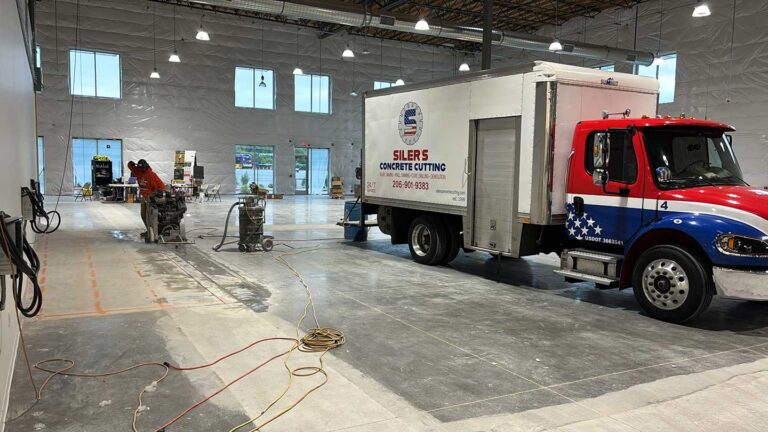Concrete Flat Sawing: Essential Guide for Efficiency and Precision
Concrete flat sawing is a widely utilized technique in the construction industry to create clean and precise cuts on horizontal concrete surfaces. This method involves the use of a diamond blade mounted on a walk-behind machine that a single person operates. Contractors and construction professionals often rely on this process for various purposes, such as creating expansion joints, cutting trenches for conduits, making openings for ducts or elevators, and executing demolition projects.
One of the main advantages of using concrete flat sawing is its ability to produce fast and accurate results while minimizing strain on the operator. This not only increases productivity but also ensures a high level of safety on the job site. The technique is versatile enough to handle a wide range of concrete structures, such as slab on grade floors, bridge decks, driveways, and even structural or elevated slabs.
Selecting the right concrete cutting service is essential for achieving the desired outcome in any project that requires concrete flat sawing. Factors to consider include the company’s experience, the type and quality of equipment used, and their knowledge of various concrete sawing applications. By choosing a reputable and experienced concrete cutting provider, contractors can ensure professional and efficient results that meet their project’s specifications and requirements.
What is Concrete Flat Sawing
Concrete flat sawing is a widely recognized diamond cutting technique used in construction projects. This method involves mounting a diamond blade on a walk-behind machine operated by a single individual. Flat sawing is ideal for cutting horizontal concrete installations, commonly referred to as slabs of concrete.
The process of concrete flat sawing is often employed for creating openings and trenches needed for tasks such as creating control joints or laying underground wires and pipes. It is an efficient option for cutting through both asphalt and concrete surfaces, allowing for a wide range of depths and accommodating various project requirements.
Different types of saws are utilized for various purposes depending on the work environment. For instance, outdoor concrete cutting projects may require diesel saws, while electric units are often the better option for indoor jobs such as cutting concrete in basements.
In conclusion, concrete flat sawing is a versatile cutting method that simplifies construction tasks involving horizontal concrete surfaces. Its adaptability and efficiency make it an essential tool in the construction industry.
Tools and Equipment
Concrete Flat Saws
Concrete flat saws, also known as slab saws, are essential tools for concrete flat sawing projects. These walk-behind machines are operated by a single person, allowing for efficient and precise cutting of horizontal surfaces such as floors, bridge decks, and pavements. Flat saws come in various sizes and power options, including electric and propane models, to suit the specific requirements of a project.
Blade Selection
Choosing the right diamond blade for a concrete flat sawing project is crucial for achieving optimal performance and results. Factors to consider when selecting a blade include:
- Material hardness: The hardness of the aggregate and the type of sand in the concrete will impact the performance of the blade. A softer bond is suitable for cutting hard concrete, while a harder bond is better for softer concrete.
- Blade diameter: The depth of cut required for the project will determine the diameter of the blade. Typical diameters range from 12 to 36 inches.
- Wet or dry cutting: Wet cutting is preferred for most concrete flat sawing projects, as it helps to keep the blade cool and reduces dust. However, in situations where water is not accessible, dry cutting may be necessary. Be sure to use a blade specifically designed for dry cutting to avoid overheating and damage to the blade.
Safety Equipment
Safety should always be a top priority when performing concrete flat sawing. Proper safety equipment may include the following:
- Protective clothing: Workers should wear long sleeves, long pants, and durable footwear, such as rubber boots or work boots.
- Eye protection: Safety glasses or goggles should be worn to protect the eyes from flying debris and dust particles.
- Hearing protection: Earplugs or earmuffs should be used to minimize the risk of hearing damage caused by the high noise levels associated with concrete cutting equipment.
- Respiratory protection: Dust masks or respirators should be worn when dry cutting to minimize the inhalation of harmful dust particles.
In addition to personal protective equipment, workers should also follow best practices for operating concrete flat saws, such as maintaining proper control of the machine, avoiding cutting near energized electrical lines, and using caution around potential hazards like rebar or other embedded objects.
The Sawing Process
Marking the Cut Lines
Before beginning the concrete flat sawing process, it is crucial to accurately mark the cut lines. This ensures the cuts are precise and in accordance with the project requirements. Professional concrete cutting technicians typically use chalk or specialized markers to clearly define the cut lines on the concrete surface, which helps to prevent any unnecessary mistakes or damage during the cutting process.
Making the Cut
Once the cut lines are marked, the concrete sawing technician proceeds with making the cuts. Using a walk-behind machine equipped with a diamond blade, the operator carefully follows the marked lines while cutting through the concrete slabs. It is essential to maintain control and stability throughout the cutting process to ensure a clean cut and avoid any potential hazards. The walk-behind machine requires only one operator and is typically used for horizontal flat surfaces such as floors, bridge decks, and pavements.
During the cutting process, some projects may involve cutting through reinforced concrete, which includes steel bars embedded within the concrete. In these cases, the diamond blade saw is capable of efficiently cutting through both the concrete and the steel reinforcement, ensuring a smooth and precise cut.
Post-cutting Activities
After the concrete flat sawing process is completed, it is necessary to conduct some post-cutting activities to clean up the workspace and, if necessary, attend to the cut concrete. This may involve removing any debris and dust generated during the cutting process, which can be achieved using industrial vacuum cleaners or other specialized equipment.
When applicable, projects may also require trench pourback services for plumbing, electrical, or construction sectors. This involves filling in the cut trenches or gaps with fresh concrete, allowing the previously exposed utilities to be safely enclosed within the newly poured concrete. This process ensures the structural integrity of the concrete surface and restores its functionality for long-term use.
Safety Measures
Operator’s Safety
Flat sawing is an essential technique in the concrete cutting industry. To ensure the safety of operators, it is important to follow specific guidelines when using flat saws.
- Use appropriate personal protective equipment (PPE), such as safety goggles, gloves, ear protection, and hard hats, at all times during operations.
- Make sure that only trained personnel operate the equipment, as they should have extensive knowledge on how to use and maintain the flat saw safely.
- Inspect the equipment daily, checking for potential defects, including blade guards, diamond blades, and the saw’s power source (gas, propane, or diesel).
- Follow the manufacturer’s guidelines for the maximum blade speed and size appropriate for the specific flat saw and project.
Job Site Safety
Safety on the job site is crucial, not only for the operators but also for other workers and bystanders. Consider the following measures to ensure job site safety:
- Establish a safe work area by using cones, barriers, and signs to warn workers and the general public of the cutting operations taking place.
- Make sure all necessary utilities (such as water, gas, and electricity) are correctly marked and located before sawing to prevent accidents or damage to the utilities.
- Continuously follow a cleanup and debris removal routine to prevent slipping hazards and to maintain a clear workspace.
- In case of wet cutting operations, take appropriate measures to avoid water accumulation that could lead to slippery surfaces or potential electrocution hazards.
By following these safety measures, operators and job sites can minimize the risks associated with concrete flat sawing, ensuring a safer and more efficient work environment.
Applications of Concrete Flat Sawing
Construction Applications
Concrete flat sawing plays a crucial role in various construction tasks. Its primary use is in cutting horizontal flat concrete surfaces, such as floors and pavements made of concrete or asphalt. This technique enables cutting reinforced concrete floors, opening spaces for staircases, elevators, and ductwork, as well as trenching for electrical and plumbing installations.
In addition to indoor construction projects, concrete flat sawing is also employed in road and highway repairs, which include removing damaged pavement sections and creating expansion or control joints. Such sawing techniques are often used in runway, bridge deck reconstruction, and other heavy-duty applications.
Demolition Applications
Concrete flat sawing proves to be an efficient method in demolition projects too. For instance, it is utilized in demolition and removal of old or deteriorated concrete slabs, making it an excellent choice for both residential and commercial projects.
Apart from demolition and removal, concrete flat sawing is also used to ensure proper clean-up and repair of cracks in pavements, floors, or walls. This technique enables precise and controlled cuts, offering a safe and effective solution for dismantling concrete structures. In summary, concrete flat sawing serves as a valuable tool in numerous construction and demolition tasks, providing accurate and efficient cutting solutions.
Conclusion
Concrete flat sawing, also known as slab sawing, is an essential technique for creating precise cuts on flat surfaces such as floors, bridge decks, and pavements. This method employs a walk-behind machine with a mounted diamond blade, which only requires one operator to manage and execute the job. Flat sawing is primarily used for leveling damaged pavement, providing control joints, or laying underground wires and pipes.
There are different types of concrete sawing methods, each with its own benefits. For instance, concrete slab sawing can be done using either a diesel or electric unit, depending on the specific requirements of a project. In general, diesel saws are better suited for outdoor work, while electric units are recommended for indoor environments, such as basements (source).
Overall, concrete flat sawing is a critical element in construction and renovation projects. It enables efficient and precise cutting of concrete, ensuring that the end result is to the highest standards. By understanding the various techniques and best practices involved in concrete flat sawing, industry professionals can execute their projects more effectively, ultimately contributing to the success of their work.




